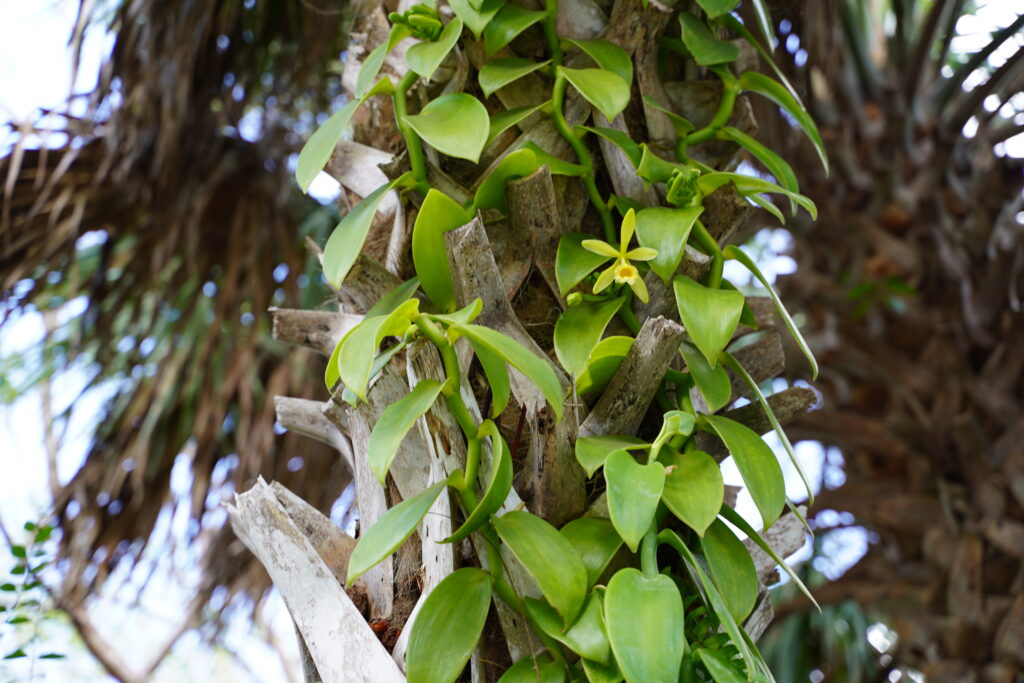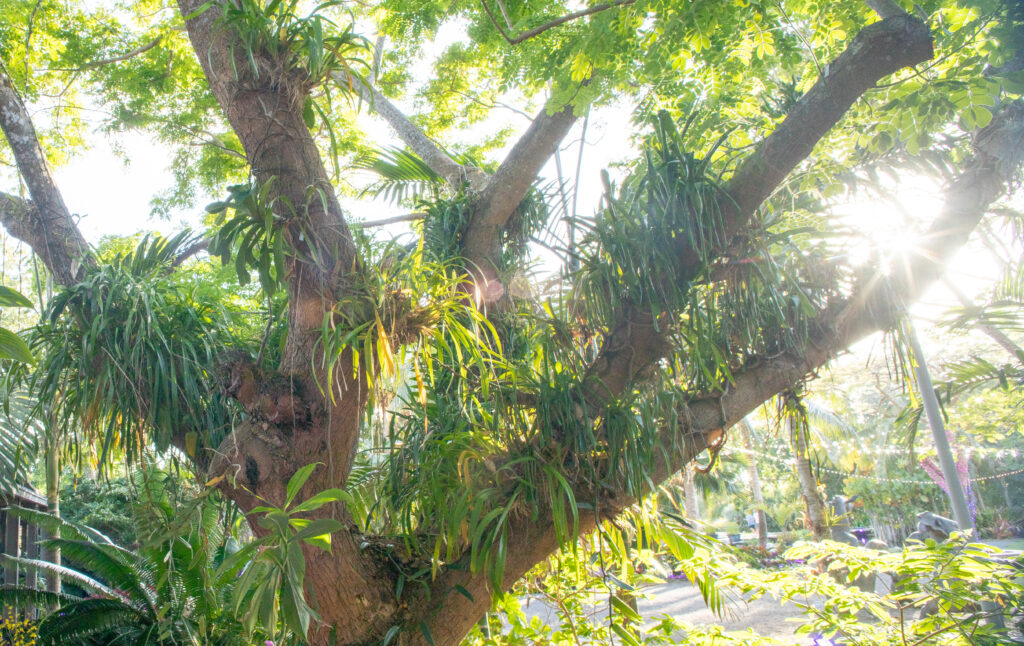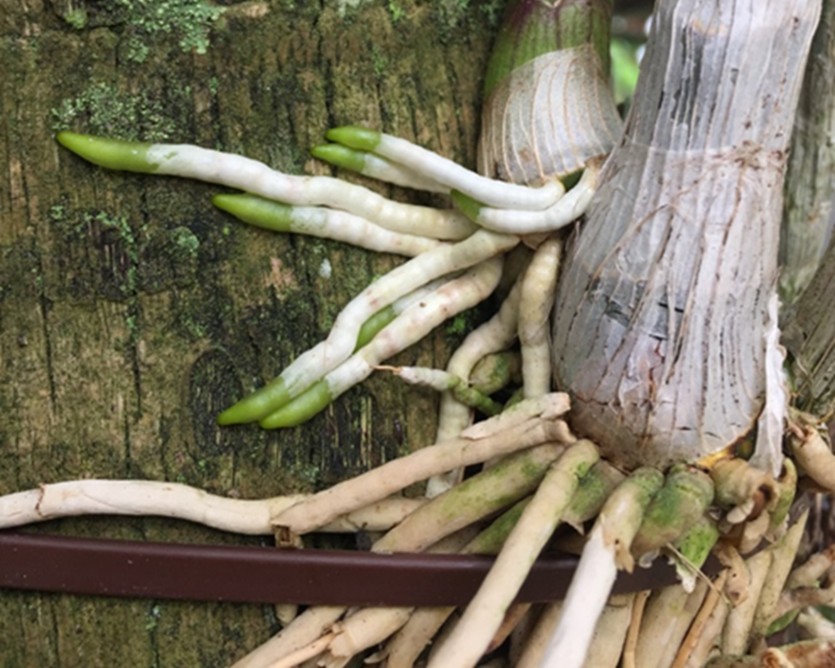
Move over, Pinterest!
This summer, Garden horticulturists share their favorite plants and landscape design tips in a special series perfect for those who are eager to add pizzazz to their yards, and for homeowner associations looking to refresh community spaces.
These simple concepts, illustrated with photos from the Garden, are certain to inspire. With rainy season upon us, now is the perfect time to get planting.
Nick Ewy, Director of Collections
Nick’s Favorite Design Tips
- Use tropical climbers to add additional vertical elements in your landscape and interest with large bold foliage and interesting forms. Climbers can ascend trees, palms, trellises, or other upright structures. You’ll find a large diversity of plants to choose from, such as: aroids, which include Monstera and Philodendron species; vanilla orchids; climbing cactus, such as dragon fruit; Hoya and Dischidia species; and climbing orchids, such as species in the Arachnis and Papilionanthe genera.
- Use epiphytic plants (plants that grow upon trees) to add additional color, texture, and interest. This type of garden element and plant material is also mostly unique to a subtropical/tropical environment. There’s a wide range of plant groups you can consider. The most commonly used are orchids, bromeliads, ferns, and cacti.

Nick’s Favorite Plants to Use
Monstera deliciosa is a readily available climber with large, dramatic Swiss cheese-like leaves (“Swiss-cheese plant” is one of its common names). It’s easy to grow in the landscape as a large groundcover that will climb up any available tree. Monstera deliciosa produces an edible fruit that can be safely consumed only when ripe. Try Monstera ‘Thai Constellation,’ which once was very rare and expensive but is now readily available. It is similar in shape and size to M. deliciosa but with dramatic yellow/white variegation and splotches on leaves.
Note: A few climbers can be aggressive and considered invasive. These include arrowhead vine (Syngonium podophyllum) and pothos (Epipremnum pinnatum), two common houseplants that should never be planted in the ground!

For epiphytic plants, I recommend Myrmecophila tibicinis and other plants in the same genus. These are orchids that are easy to grow into large specimens in hot, sunny locations, such as in direct sun on the side of a palm tree. They are also able to survive with limited supplemental watering in the South Florida climate once established.
Putting it All Together
Climbers, such as the vanilla orchid (Vanilla planifolia), can be found throughout the Garden. The highest concentrations are in the Kapnick Brazilian Garden and in Kathryn and Irma’s Garden at the Chabraja Visitor Center.
Orchids and epiphytes give tropical and subtropical regions like Southwest Florida a distinct sense of place. We feature orchids and other epiphytic plants—those that don’t require soil to grow—throughout the property. The LaGrippe Orchid Garden has the highest concentration, but don’t be surprised if you round a corner and find a brightly colored orchid affixed to a tree.


How to Attach an Orchid to a Tree
1. Do a little research on your plant’s lighting and moisture requirements. Many orchids, like the moth orchid (Phalaenopsis hybrid), and epiphytes prefer shadier locations but others may require bright light or full sun in order to bloom.
2. Remove potting media.
3. It’s best to install orchids when new roots are emerging. Place these new roots and growth against the tree.
4. Secure the base, rhizome (root-bearing stem), and roots tightly with zip ties.
Note: You may need to add additional ties higher up on tall plants.
5. A light covering of coconut fiber or Spanish moss near the roots may help the plant transition.



